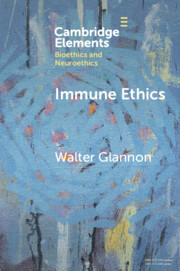Element contents
Immune Ethics
Published online by Cambridge University Press: 14 July 2023
Summary
Keywords
- Type
- Element
- Information
- Online ISBN: 9781009304610Publisher: Cambridge University PressPrint publication: 03 August 2023
References
- 11
- Cited by

